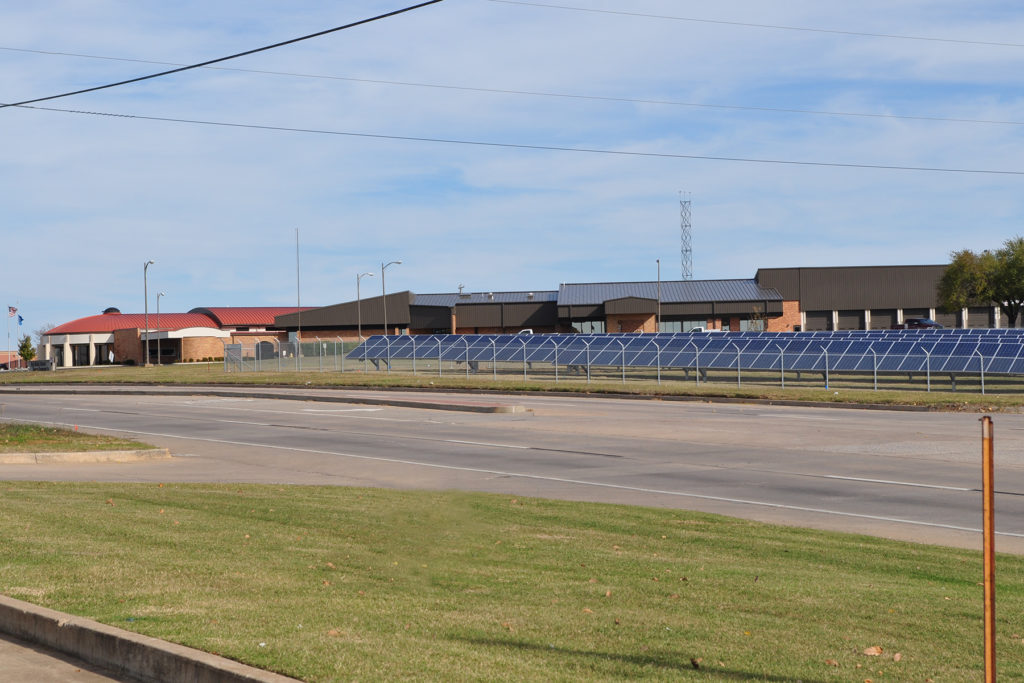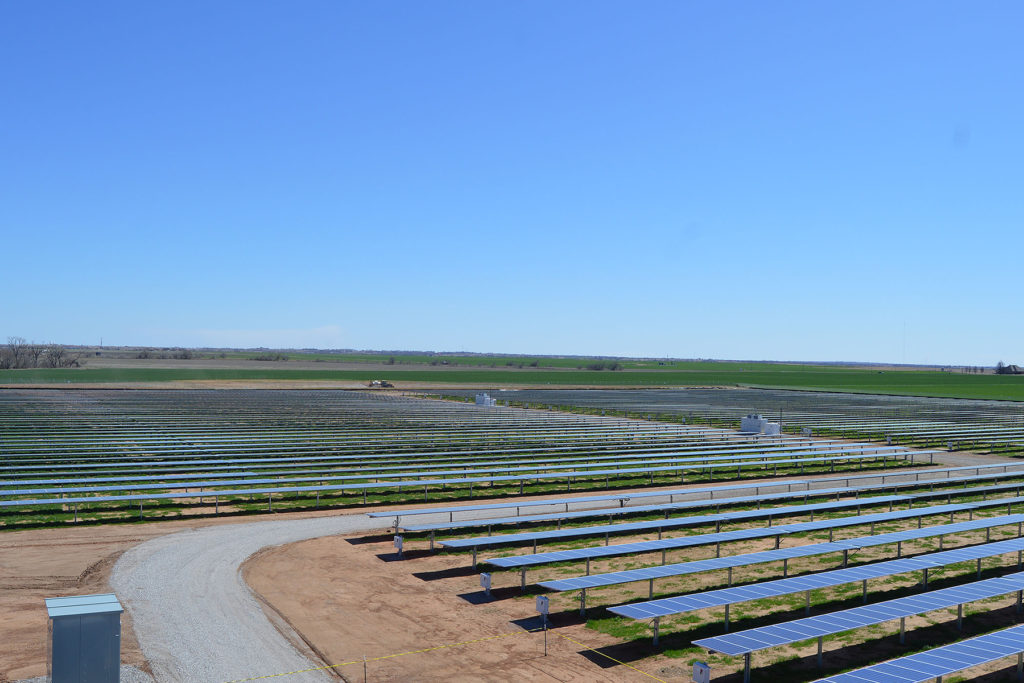
Karen Higgenbothem and her husband, Leroy, have been members of East Central Oklahoma Electric Cooperative since they bought their farm in Haskell more than 50 years ago.
After half-a-century, they’re primed for a new energy future. Karen signed on to the co-op’s community solar project after seeing photovoltaic panels as she drove around Oklahoma.
“I subscribed to two panels. As it turns out, they were the first two,” she said. “This was a way to get solar without worrying about maintenance.”
For Okmulgee-based East Central Oklahoma EC, a 250-kilowatt array developed with help from its power supplier, Western Farmers Electric Cooperative, is off to a strong start. About 150 of the 950 panels available have already been subscribed at a one-time cost of $350 each.
“We surveyed our members and found a lot them were interested in solar,” said Billy Moore, director of member and public relations. Under the terms of the contracts, members can opt out at any time and receive refunds, or continue their subscriptions through 2041.
“There’s absolutely no pressure for them to participate. This is an opportunity for them to be involved in clean energy,” said Moore, adding that promotion of the program is ongoing, but low key.
“When I saw information about the solar program in our co-op’s newsletter, I thought getting involved would be a great way to help,” said Barbara Wilson, a former dairy farmer who lives in Mounds, Oklahoma. “We know investing in the co-op helps everybody.”
Wilson, 70, and her husband Charles have been members of the co-op since they married 52 years ago. They’ve subscribed to four panels, two for their place and two others for a home owned by her 99-year-old mother.
“If my dad had been here, he would have gladly jumped on the wagon to help,” said Wilson. “We’re not in this to make money, but if everybody participates in a small way, it takes the pressure off the co-op.”
One newer member feels so strongly about it that he’s subscribed for 10 panels.
“I see this as a long-term investment in helping me to control my energy costs,” said Matt Owens, who moved into the co-op’s service territory in 2003. “It’s great for the environment and I like the idea of supporting all sources of energy.”
Owens is considering subscribing to more panels and adding wind turbines to his property to help meet power needs for his hay production and cattle operations.

Anadarko, Oklahoma-based Western Farmers Electric Cooperative recently dedicated 18 solar projects, including five utility-scale arrays, adding a total of 21 megawatts of power to its system.
The G&T, which serves distribution co-ops in an oil and gas rich area of Oklahoma, western Texas and eastern New Mexico, will own and maintain all of the facilities, including 13 smaller projects in the service territories of 11 of distribution co-ops.
“Western Farmers Electric Cooperative and its member cooperatives, like East Central Oklahoma Electric Cooperative, have been hearing from local members for several years about their desire for renewable energy,” said Brian Hobbs, the G&T’s vice president of legal and corporate services.
Hobbs added that the distribution co-ops have the flexibility to use the power generated from the panels as part of their energy supply or to offer members opportunities to subscribe to community solar without the maintenance and upkeep member-owned systems would entail.
“These projects have increased the amount of solar energy production in Oklahoma by approximately five times,” said Hobbs, adding that they support the G&T’s generation diversification and reinforce its long-term commitment to reliability and price stability.
As for the Higgenbothems, they now have 80 acres on hand for honeybee and cattle operations, and the two panels for their part in East Central Oklahoma EC’s solar array.
“Solar power is part of the future. Eventually, everybody is going to have some,” Karen said.
Derrill Holly is a staff writer for NRECA.